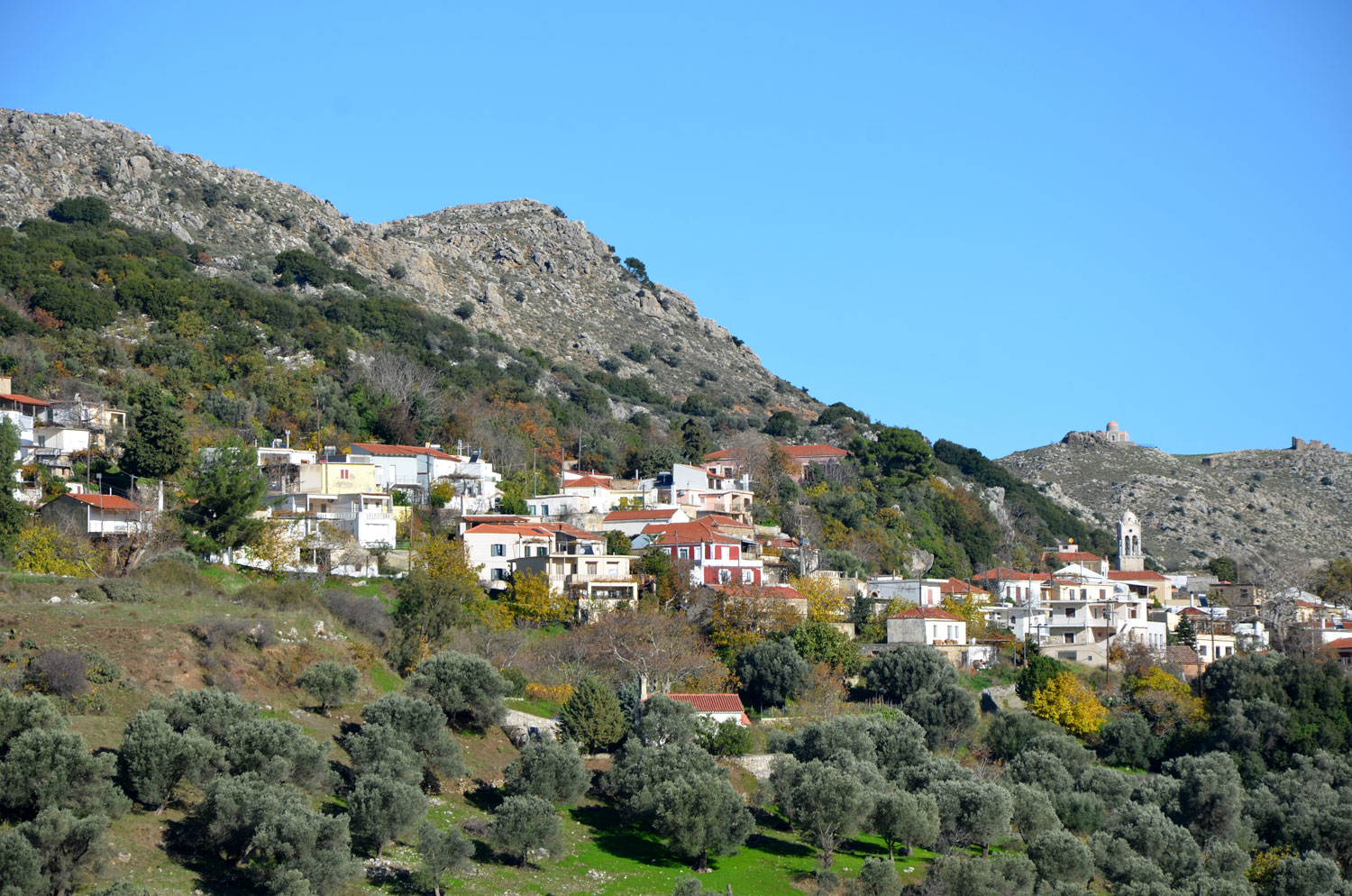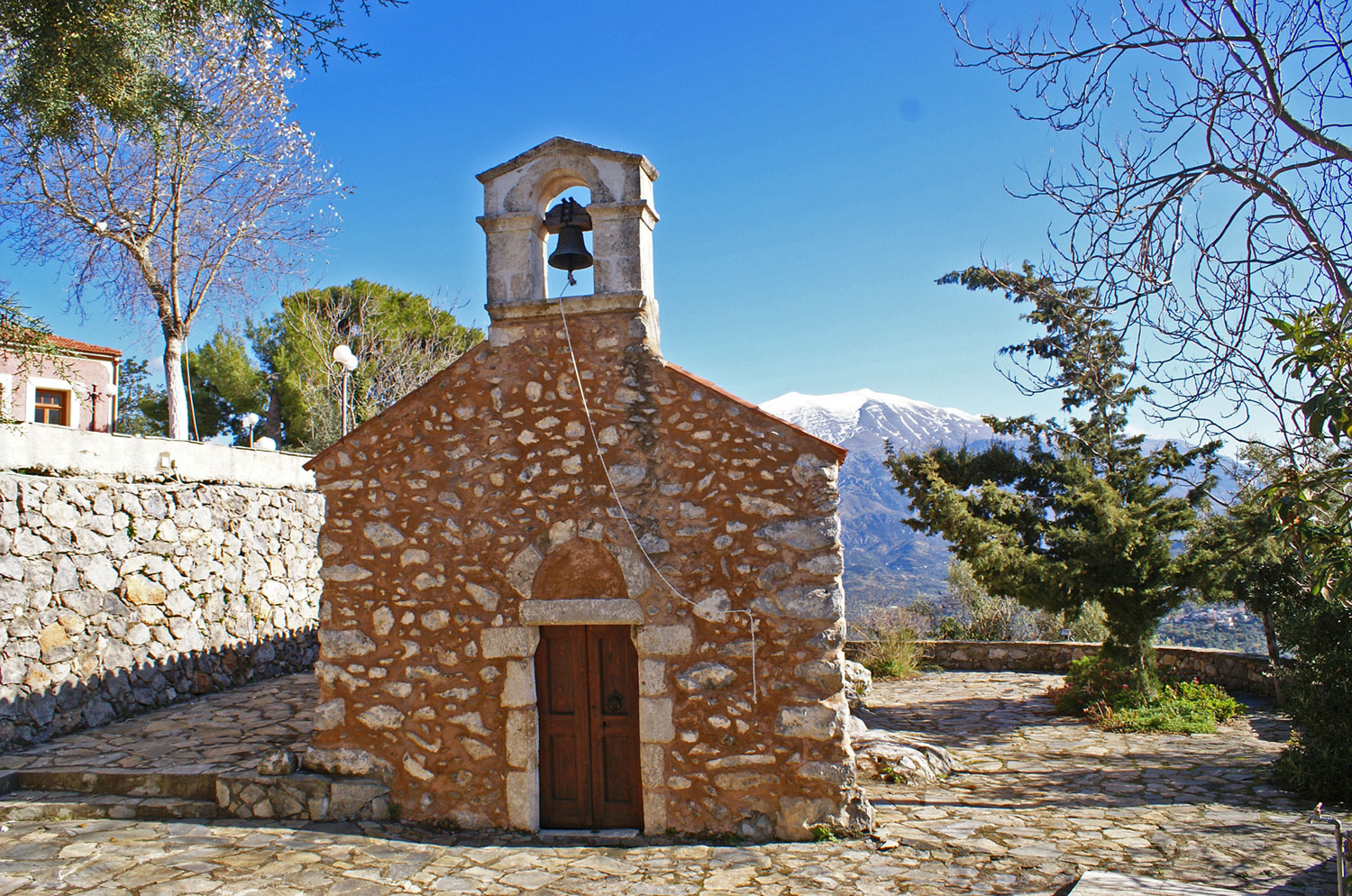Meronas
A village with a panoramic view
Nestled on the southeastern slopes of Mount Panaori (or Katsonissi), at an altitude of 630m, Meronas enjoys a beautiful view of the Amari Valley (Assomathianos Kampos) and the mountains of Psiloritis, Samitos and Kedros.
Meronas is built on a NE-SW axis, shaped like an amphitheatre. It is surrounded by 168 acres of lush vegetation, extensive woodlands (white oaks, Kermès oaks, plane trees, brushwood) and agricultural crops (olive trees, fruit trees, cereals and vegetable gardens).



Main features of the village
Meronas is the 4th largest village in Amari – among 42 inhabited communities – with 120 permanent residents. It is a typical village of the Cretan hinterland with a central square, narrow streets, fountains of crystal clear water and numerous C13th and C14th churches. There is an old school, cafes, taverns and various places to stay.
The houses are perched on a steep hillside (between 580m to 645m above sea level), nestled together in old neighborhoods with winding cobbled streets, courtyards and arcades. Architectural elements typical of old Venetian facades (14th – 17th centuries) are scattered throughout the village.
History of Meronas
The origins of Meronas probably date back to the end of the 13th century, when the four hamlets of Agios Georgios, Myriana, Metochia and Agios Ioannis merged in the current location.
According to the religious tradition of the region, the name Meronas comes from the Greek verb “merono” which means “live in peace”. This stems from a story that an ancient icon of the Virgin came “to rest”, “find the serenity” and “know the peace” in this particular place.
The piece of wood on which the icon was painted survives to this day, though the painting itself is no longer visible. It can be found in the famous church of the Dormition (Assumption) of the Virgin Mary, towards the south end of the village.

There is no historical evidence of the origin of the name of the village. However, the current name of Meronas first appears as an official reference in a public document of 1301.
An important role in the evolution of Meronas was played by the Kallergis family (Byzantine origins), whose coat of arms can be seen both inside and outside the Church of the Dormition.
Powerful and rich, this family of nobles with its descendants contributed to the organization of the village, the construction of the churches and their decoration with frescoes and icons.
Meronas appears in the administrative documents of Crete throughout the eight centuries of its history and the number of inhabitants can be seen to change due to historical and economic circumstances.

Demographic characteristics of Meronas
Meronas is the 4th largest village in Amari – among 40 inhabited communities – with 318 residents registered in the 2011 census, compared to 5915 residents in the whole commune.
In summer the population of the village multiplies with the seasonal return of Meronassians living in other cities of Crete and Greece (and emigres to Europe and the United States). In winter it decreases to just 75 households, which translates to 120 members (1.6 members per household) and an average age of 60.4 years (2019).
Unfortunately, the figures for children and young people are very low (only 7 children under 10 and 3 children aged 11 to 20), as is the case with the 21 – 50 age group, with only 25 people. On the other hand, there are 85 people in the 51 – 100 age group.

Economy of the village
The primary income of the inhabitants of Meronas comes mainly from a mixed rural economy such as agriculture and animal husbandry.
However, there has been a dynamic growth over the last decade in rural tourism, or agro-tourism, which is becoming increasingly important to the local economies in Meronas and the entire Amari commune.
The primary occupation of the Meronassians is the cultivation of the olive tree, vines and cereals. There is a local olive press and around 40 to 60 tons of olive oil is produced per year.
Most families have a few sheep and goats, while some shepherds have large flocks of up to 400. There is in excess of 900 animals in the area producing around 130 tons of milk.
Poultry, pigs and rabbits are less present today than in the past.











